Graded grains make finer flowers

This week: Graded grains; Lucerne; Dry walls; Blog Weather reports;
There are always too many jobs and not enough time. The weeds are growing everywhere, the combination of sun, warmth and moisture creates their headlong rush to flower, seed and ensure they are spread far and wide before the heat of summer causes die-back or dormancy.
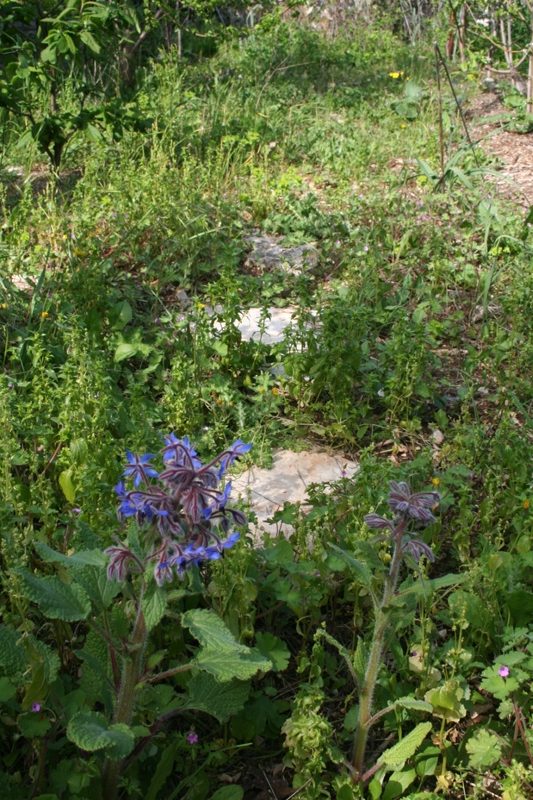
The blue flowers are Borrage and are supposed to be there. Everything else it not!
With the arrival of much needed rain and at 25 mm, a reasonable quantity, I have not needed to run the irrigation system. I did install a second line of pipework in the top orchard though. The heavy rain and wind beat a lot of young fruit off the plum trees though.
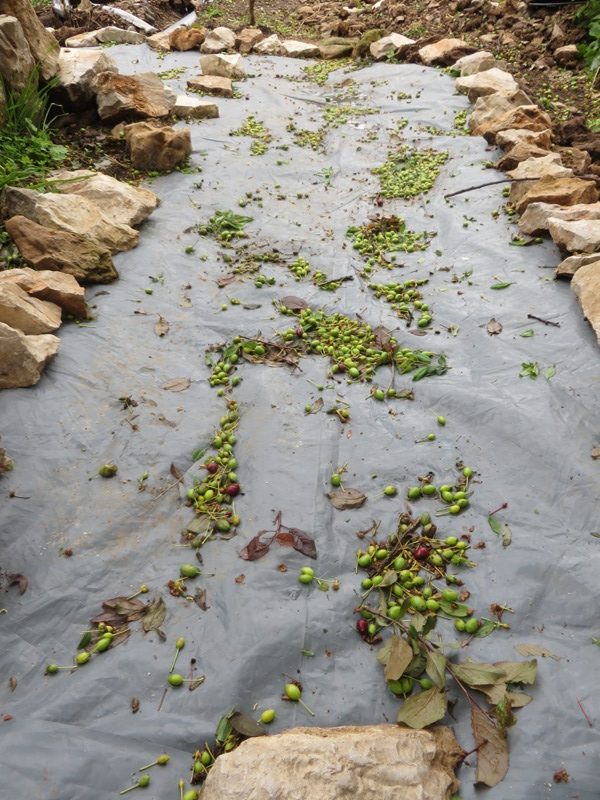
Being out early means that I see some ephemeral things. Overnight dew has crystallised on these leaves as a radiation frost, even though the overnight low was +8C.

I finished the raspberry pruning this week. It is much easier to cut out the dead stems when the live stems have just started into growth.
I was left with a pile of prunings from the grape vines, some plum tree trimmings and the raspberries to put through the shredding machine.
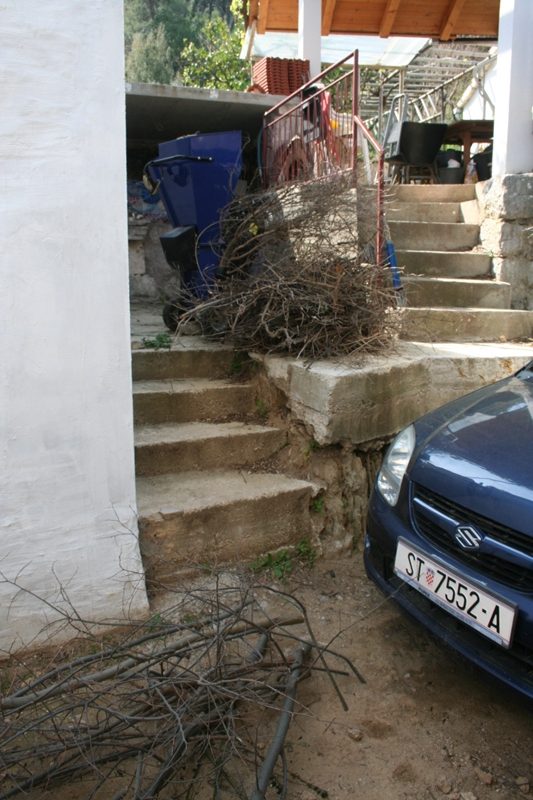
Once complete, the pile of mulch to go round the citrus trees has increased, the trimmings have gone and the machine was cleaned and put away to await the autumn.
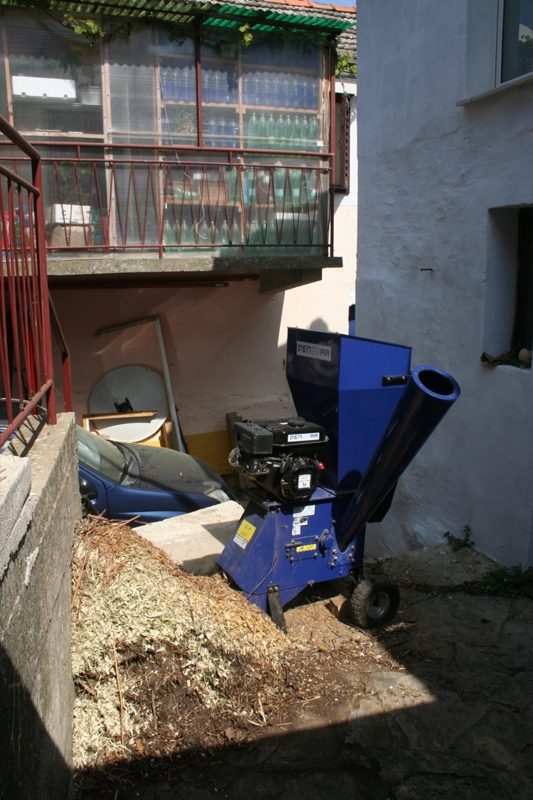
Graded grains make finer flowers
The cubic metre of small stones I ordered was delivered this week by Camion.
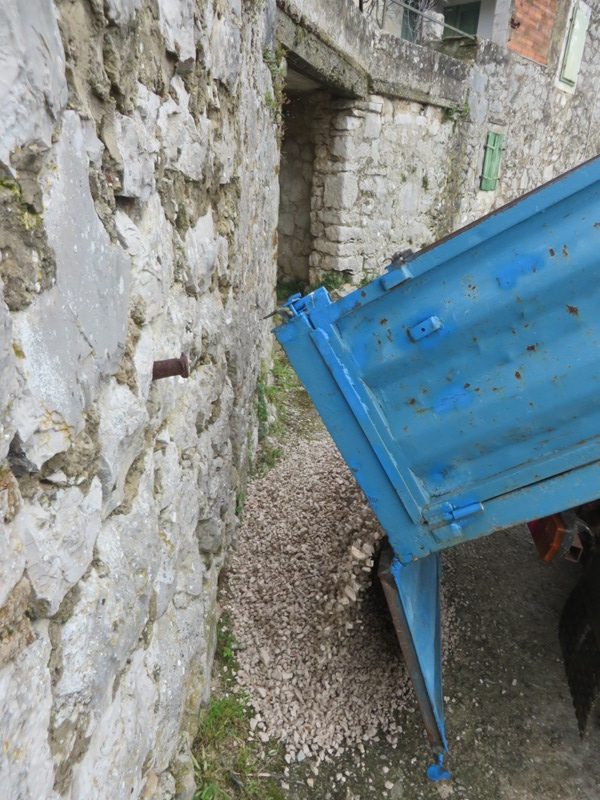

With 27 wheel barrow loads moved down to where I am creating an all weather path, there is not much left now in the heap outside my gate.
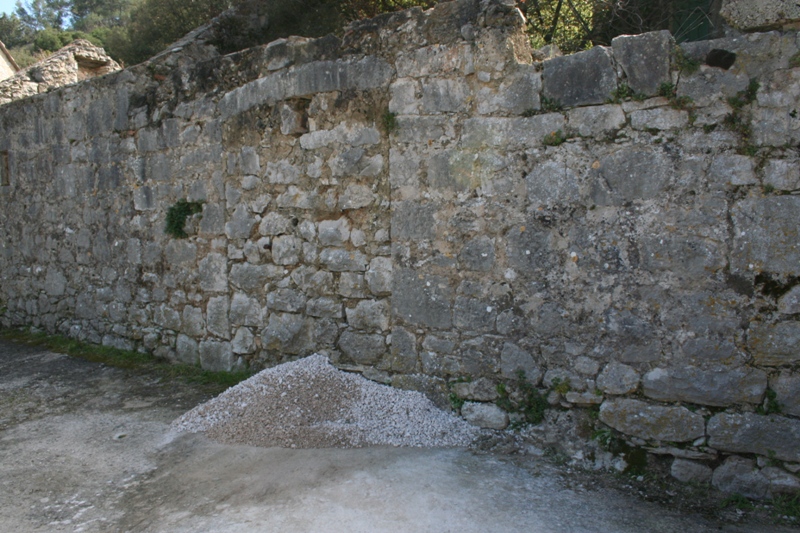
No more than five more barrows loads and it will all have been used up. I am happy with the result though, even if these sharp, angular stones are not quite the washed gravel that I had in mind.

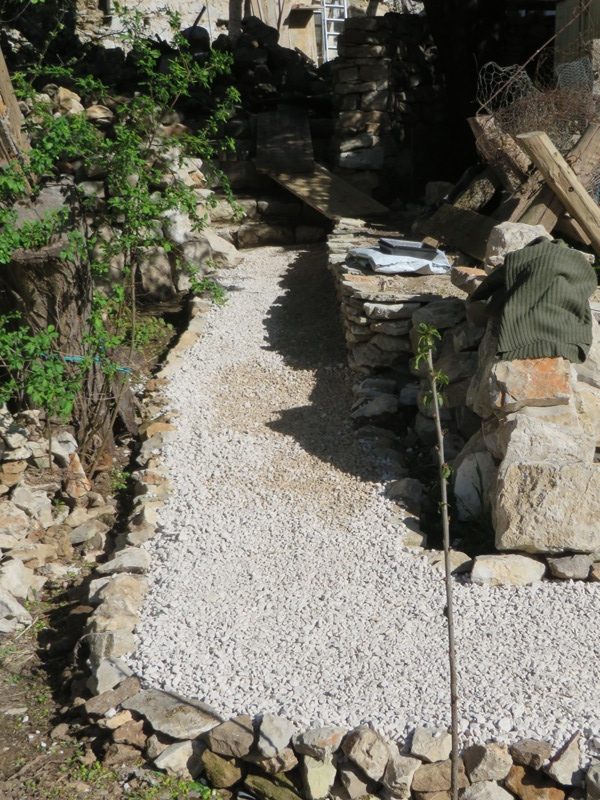
I have had to extend the path a little beyond where I had planned to be at this stage. There is still some good quality soil to be dug out, for the path foundations. This I riddle to remove the stones, of which there are many.
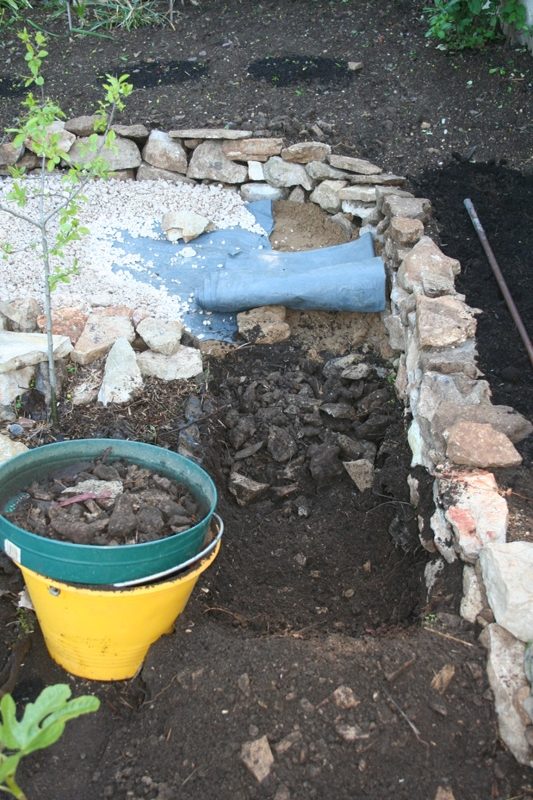
With a small mesh riddle, the graded grains of soil go straight onto the herbaceous border I am creating along my boundary. With a fine tilth, good drainage and an underground irrigation system, I am hoping that in future years this will become a riot of colour.
Over coffee with neighbours this week, it was explained to one non-English speaking neighbour, what I was doing. Her response was “Nobody here does that. We don’t have garden flowers.”
Much as I have observed previously, there are a few bulbs to be seen, but with little land around people’s homes, every bit they have is turned over to the production of salad and food crops.
Lucerne
The Lucerne I planted during this week last year has really started to thrive and it is weed free.
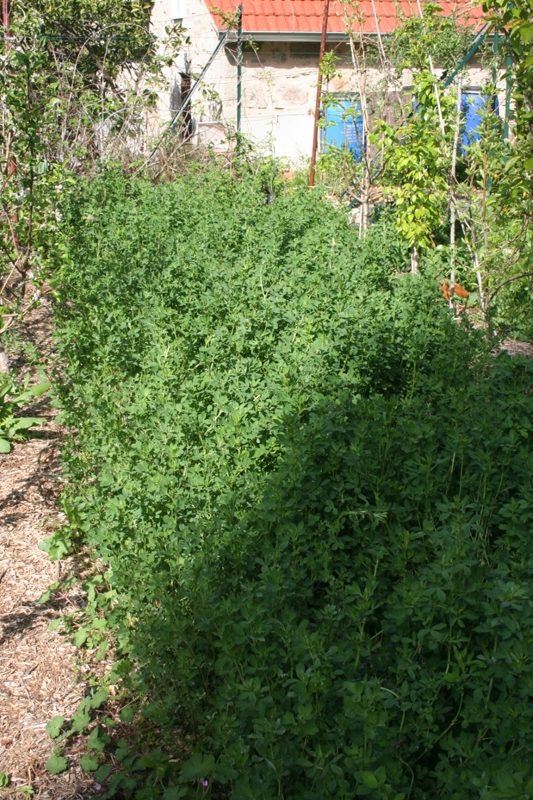
I planted two different crops in 2018 as a trial, the Lucerne, Medicago sativa and a special mix of orchard grass for clay soils. Unfortunately my timing was a bit off and the expected rains failed, so I was forced to irrigate.
The grass completely failed to germinate, the Lucerne took a little while to get going, but this year it is really strong. Learning from last year, rather than planting in the spring, I will wait until August, but this time I will cover most of the Drupe orchard with the Lucerne.
Lucerne is a Mediterranean native and classed as a herbaceous perennial, but can be cut three times a year before flowering, so what I have, I intend to use. Rather than a green manure, I will compost it, along with the other green waste I produce, which will then be put back into the soil.
I will allow it to flower once though, as that is recommended by the experts. It has nice blue purple flowers.
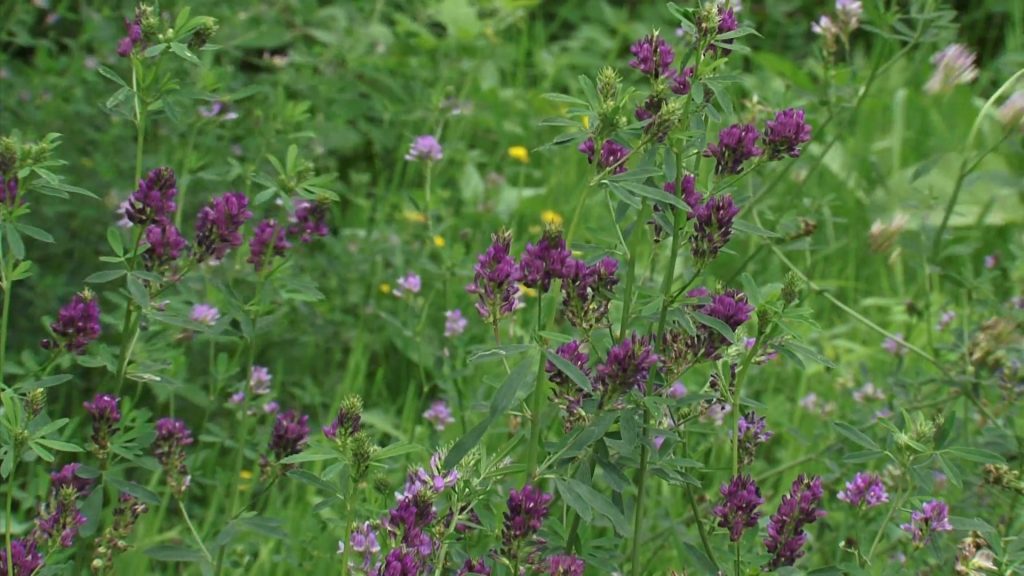
Once established, the Lucern has a growth crown at soil surface level, and so long as this isn’t damaged, it will continuously regenerate. Over the past winter I’ve looked several times and wondered if it had survived, but this week as I measure the plant height at 50 cm, it is clear that it has.
Perennials such as Lucerne extract water from deeper in the soil profile than conventional annual crops and grasses, and the dry soil zone acts to decrease drainage beyond the root-zone, partially restoring the original water balance. Lucerne is especially deep rooted, the average root length, depending upon the soil conditions, is two to three meters, but a root system extending to 15 meters deep, to reach perpetual ground water is not unknown.
This latter comment can be found in some scientific journals, so I presume a Professor at some university or agricultural college has had a group of students dig and dig to measure the plan’s root length. I hope that were able to use a JCB! Digging fifteen meters by hand is a bit much, even for students…
My reason for planting Lucerne is in part because of the plant’s ability to regenerate quickly after being cut (just four to six weeks) producing thick, weed suppressing top growth.
Being a legume, its nodulation of nitrogen close to the surface and its deep rooted search for water is of benefit. Planted between rows of cordon fruit trees, I don’t want plants which will compete with the trees for the scarce commodity of precipitation moisture in the soil, so a deep rooted perennial like this is ideal.
Lucerne also has a longevity of fifteen, twenty or even more years before it needs to be re sown, so anything which helps me in all these various ways is most welcome. It plays host to a number of beneficial insects and when in flower is highly attractive to bees.
Dry walls
With the curved wall foundations in place, I riddled more spoil and separated the huge chunks of sandstone from the small pieces and the sand. The next job was to place the inner wall foundation stones in place.

I talked last year in September (2018/35) about the art and science of dry stone walling. My experience is with Yorkshire dry stone walling, but therein there are differences. The dry walls of the Yorkshire Dales are made of Limestone, which is what the majority of my stone is, but it was the walling on the North York Moors that I got to study, up close and personal – granite and Millstone grit.

So I’m using the limestone, with added eroded sandstone, but in the style of a North York Moors wall. My buildings sit on a band of sandstone and it is used as the sole foundations for the building walls in places.

This sandstone band actually passes under the dry wall I am currently constructing and I have used it as the foundation where possible.
The whole of the courtyard that I excavated is sandstone. Being a soft material, rain water has eroded it, so when you dig it out, it sheers along vertical fault lines. Unlike limestone, the sandstone also holds moisture which means that where it has been used in walls, it has attracted moss and lichen.
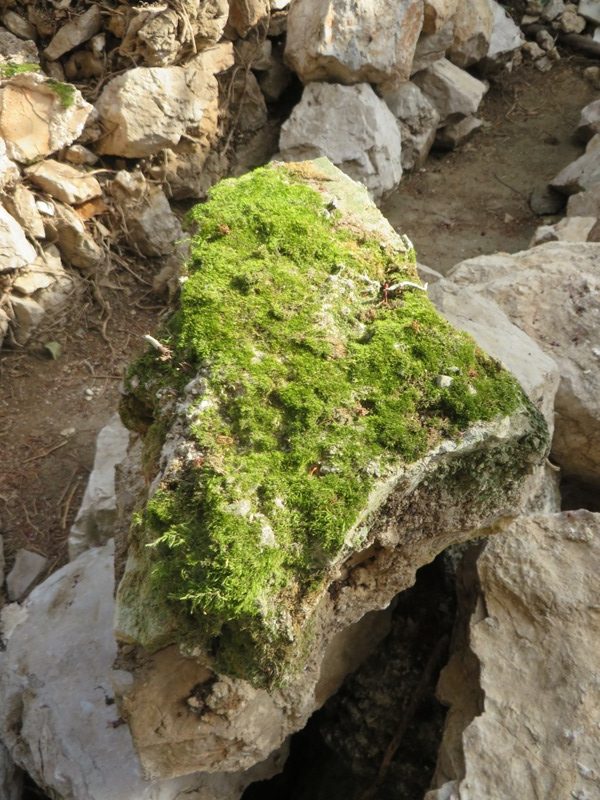
I’m building these green coated stones back into the wall in places.
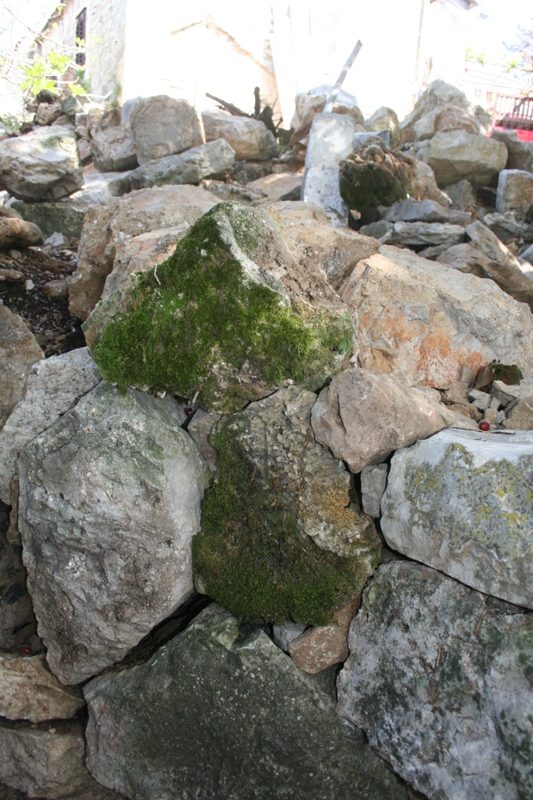
The sandstone material is also relatively light. Large pieces can be picked up and moved because it is not very dense. Because it breaks readily along the vertical formation lines, I am riddling my spoil heap to separate the small pieces and the pure sand to use under the steps.
After dropping large pieces of sandstone into wall voids and packing them down, I fill gaps with small pieces and pebbles, then add a coat of the silk soft sand to actually bed the stone steps into.
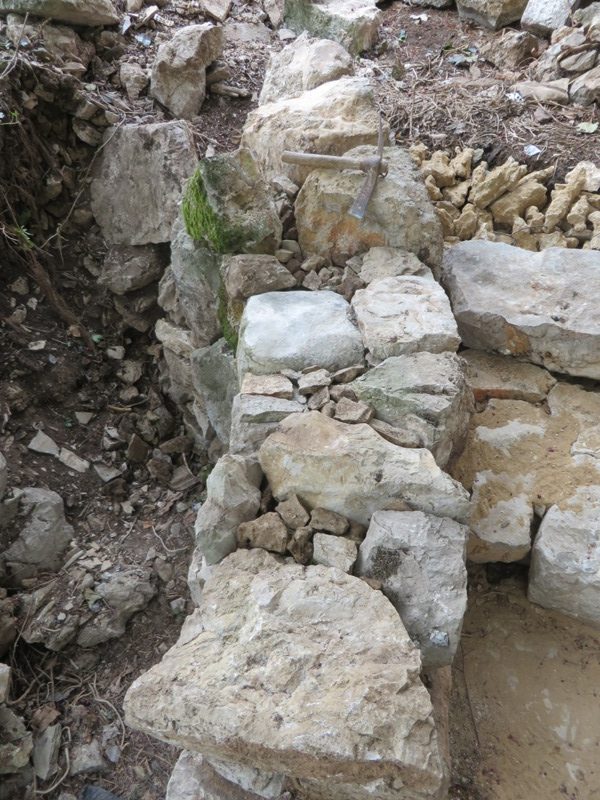
With a finished outer wall height of 220 cm and a finished height of 110 cm at the steps, the wall needs some substantial foundations. I have no shortage of huge stones to use for this task, the difficulty is getting them into place. The foundation width is 95cm narrowing at the steps to 60 cm and 40 cm at the top of the wall.
Like the steps, I fill any centre gaps with small stones and sand. The stones get gradually smaller towards the top of the wall and they are offset with some stretchers or “throughs” across the full width to hold the whole thing together. “It’s gravity wot hold the wall up!”
What I did realise this week is that I am much more creative in the mornings when I am fresh. There are thousands of stones to choose from, but I am more adept at picking the right stone for particular place, before lunch. And no, I don’t supplement my lunch with a red liquid mix of vitamins, sugars and minerals which might affect my judgement…
My dry stone walling instructor used to tell students to pick stones carefully and once you have picked up a stone, don’t put it down until you have found a place for it. It’s good advice, but it does mean that working alone, it takes time to properly build a wall.
Blog weather reports
On Thursday as I was surveying a lowering and threatening sky with my neighbour, he said that he had looked at my weather station forecast page, and decided he would use his moped to go into town, as he would be back before the rain started. He did and he was.
I know that locally there are a lot of people who use my forecast page on Wunderground, but there is a second page with the live station weather and the historic records.
However Wunderground have in the past week changed their algorithm with the result that it rounds data to a the nearest whole number. This changes the recording of data for my spreadsheet but also the look of the charts is strange, with long straight lines then a sudden jump to the next higher temperature.

The old algorithm was, in my view, much better and the information presented was more user friendly. The charts are just a lot smoother.
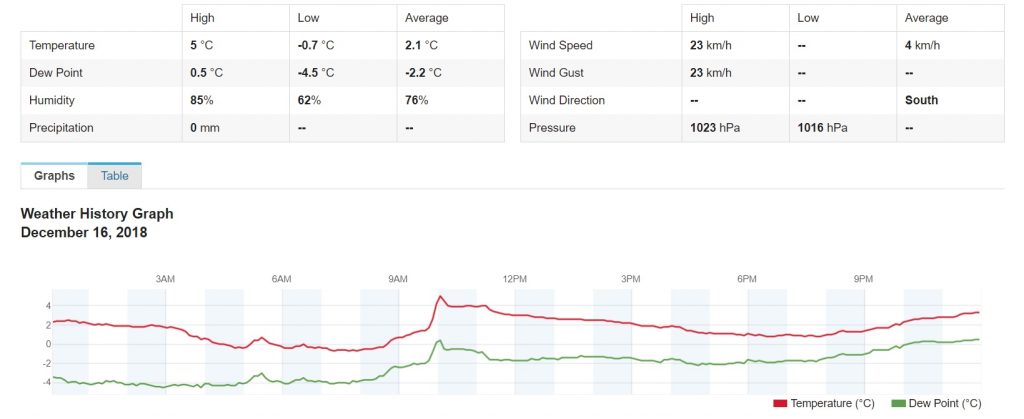
This set me off looking at whether I can incorporate my weather into one of the pages on this website. My station already automatically uploads data to several weather agencies and organisations, so the data is in theory up there in the cloud.
While I do add specialist web code (HTML5) into the Blog each week, the whole of the page that you are now reading is built using the WordPress content management system, or CMS for short.
A check of the WordPress Plugins shows that there are several which will do the job, but the best one is going to take quite a bit of work to prepare it to get my stations data and present it in a way that is user friendly and useful.
Looks as though I need a couple of wet days so I have to sit in front of a computer screen to develop and code a weather page. As I said at the very start, there are always too many jobs and not enough time. NRC